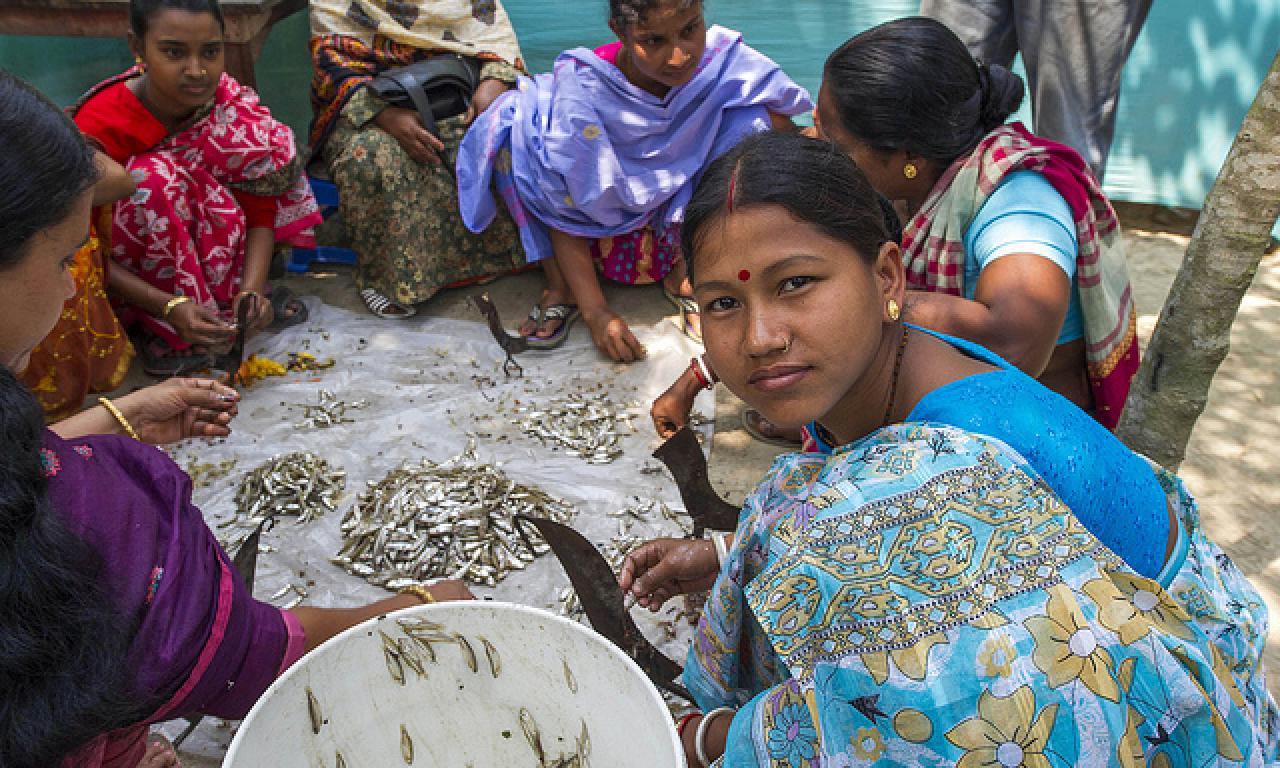
Visiting the field to see the work of WorldFish and its partners is one of the great privileges of my job. The chance to talk with farmers and learn how they are using the training and technologies we and our partners provide never fails to energise me. It invariably also provides a few surprises: on my recent trip to Bangladesh I was amazed to learn how profound a difference incredibly simple changes can make.
Recommended publications
- The role of gender in economic activities with special reference to women's participation and empowerment in rural Bangladesh
- Women-led fisheries management - a case study from Bangladesh
Visiting the field to see the work of WorldFish and its partners is one of the great privileges of my job. The chance to talk with farmers and learn how they are using the training and technologies we and our partners provide never fails to energise me. It invariably also provides a few surprises: on my recent trip to Bangladesh I was amazed to learn how profound a difference incredibly simple changes can make.
| Listen to this podcast Download |
Rehena Begum is remarkable woman. Eighteen months ago she and her husband were struggling to support their six children. Now thanks to training she has received through the USAID Feed the Future program she expects the fish she is culturing in her pond, and the vegetables she is growing beside it, to earn her more than 10,000 Taka ($US 125) when they are harvested.
On a recent trip to Bangladesh, I met Rehena and heard her story: It was heart-warming. But I confess that I was not especially surprised by her account. This was partly because I had cheated and already read about her in a feature on our website [1]. But it was also because I had met many other people across Bangladesh who told me they had benefitted in similar ways.
Happily there are plenty such people to choose from. In 3 districts of the Barishal region in southern Bangladesh alone, for example, our two year effort under Feed the Future will reach 34,000 households. In 26,000 of these it will be women farmers who are benefitting in similar ways to Rehena.
So I wasn't surprised by the impact of our work on Rehena's earnings, but she did give me pause with something she said while we watched fish being harvested from her pond.
"It's good that we now know not to cut off their heads before we cook them", she said. I was stunned.
We were looking at a mass of small indigenous fish called Mola that were wriggling in her net. About the length from the knuckle to the tip of your finger, the important thing about Mola is that they are one of the richest sources of essential fats and nutrients available [2]. My shock was because it is in the eyes and head that the bulk of the micro-nutrients reside. If Rehena and every other mother had been cutting the heads off, they had been depriving themselves and their young children of one the most important dietary components imaginable.
It was learning this that made me realise just how much of a difference a little knowledge can make and how hard it is to predict the kind of information we need to share. Without effort to analyse the nutrient content of Mola, without training farmers to increase the productivity of their ponds, and without studies of how food is prepared, the potential of this small fish to improve the lifetime health and well-being of millions of children would be lost.
The lesson for me was clear. We need development agencies to support joined up programs that bring together expertise from a range of sectors in integrated ways and that partner with individuals and communities to understand and overcome the challenges they face. And we need researchers and other development practitioners to build the productive partnerships and approaches for joint learning that will maximise their collective effectiveness. There are encouraging signs of how this is happening, but much more is needed.
The period up to 2015 for pursuing the Millennium Goals comes to a close. On Sep 25, 2013 the UN General Assembly will have a special session to start discussing the goals for the Post-2015 Millennium Development Agenda. U.N. Secretary General Ban Ki Moon will deliver an initial report with his recommendations. The report “A new global partnership: Eradicate Poverty and transform economies through sustainable development” of the high-level panel of eminent persons leaves no doubt that a new set of Sustainable Development Goals, Targets, and Indicators will be agreed upon sometime this year.
Stories like Rehena's convince me that increased investment in the integrated development approaches we are now seeing in places like Bangladesh will be key to meeting these new development goals.
So here's to a small fish species, the scientists who studied it, and Rohena and the women of Bangladesh who use their heads. If we use our own heads as effectively as they do, I am confident we can meet the challenge set by a new suite of Sustainable Development Goals.
*****
[1] Small pond fish culture training empowers Rehena
[2] Kongsbak, K., Thilsted, S. H., Wahed, M. A. (2008). Effect of consumption of the nutrient-dense, freshwater small fish Amblypharyngodon mola on biochemical indicators of vitamin A status in Bangladeshi children: a randomised, controlled study of efficacy. British Journal of Nutriiton, 99, 581 - 597.
[3] An Action Agenda for Sustainable Development: Network Issues Report Outlining Priority Challenges